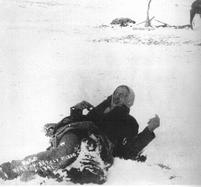
Chief Big Foot AKA Spotted Elk:
Died in 1874.
Was the son of Lone Horn.
Spotted Elk became chief of the Minneconjou Spotted Elk was a great hunter. He was also an exceptional horseman. He had a lot of horses. That where taken from their enemies. An excellent negotiator, Spotted Elk was great at settling quarrels between rival parties and was often in great need. Spotted Elk was one of the first Indians to raise corn.
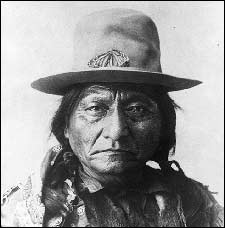
Sitting Bull:
Chief of the Lakota Sioux.
Born in 1830.
He refused to be transported to the Indian land. In June of 1876, they defeated and massacred General Terry. They were pursued northward by him. Sitting Bull with a part of his family made their escape into British land. Sitting Bull died in 1890 when followers tried to rescue him from the reservation police
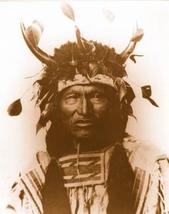
Kicking Bear:
Had been a member of a delegation sent to Utah by the Sioux.upon his return to the reservation became active in pursuing the Indians in the ritual of the Ghost Dance. Records indicate that Kicking Bear was born in 1853, but the place of birth is unknown. His father was named Black Fox, and his mother's name was Wood Pecker. Kicking Bear died on May 28 of 1904. He was 51 years old when he died. He attracted the most attention by his encouragement of the Ghost Dance. In order to relieve tension among the Indians following the decline of the Ghost Dance activity, a group of prominent Sioux was sent to Europe to tour with Buffalo Bill's Wild West Show. Little was heard of Kicking Bear after his return from the tour.
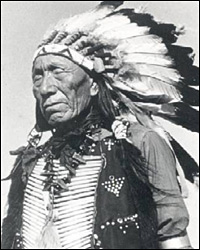
Black Elk:
Was born into the Oglala Sioux.
He had five sisters and one brother.
He had many children.
The Sioux were hunters, and they relied mainly on the buffalo. Buffalo was their main source for food as well as shelter and clothing. The Sioux lived throughout the Midwestern plains of North America, until they were put on Lakota Pine Ridge reservation in South Dakota. At the age of nine, Black Elk had a great vision giving Black Elk a gift and a special power. The grandfathers represented the powers of north, south, east, and west. Thirty years before his death, Black Elk became a Catholic. His religion was very important to him. Black Elk knew that something was wrong in his life. Black Elk soon had to visit the hospital due to ulcers. While there, he received the holy sacrament, and never suffered from his ulcers again. On December 6th, 1904 Black Elk was baptized. These last years of Black Elk's life are very important, because he was a devoted catholic. Knowing about Christ and receiving communion were what he held sacred.
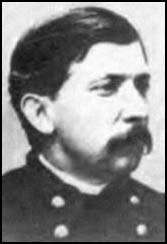
Colonel James William Forsyth:
Born on 26th August, 1834.
After graduating from West Point in 1856 he served at Fort Bellingham where he took part in military operations against the Native Americans. During the American Civil War, Forsyth served in the Union Army. He was a major in the 10th Cavalry before being appointed as aide to General Philip H. Sheridan. In 1878 Forsyth fought with the 1st Cavalry in the Indian Wars. He had considerable success in this role and in 1886 was promoted to the rank of colonel and was given command of the 7th Cavalry. The following year, Wovoka, a Paiute medicine man, had a vision where he met God. Wovoka was told that he must teach his people that they must love each other, live in peace with the white people, and must work hard and not lie or steal. Wovoka was given a dance by God that had to be performed for five consecutive days. On 29th December, 1890, Forsyth caught up with Big Foot at Wounded Knee Creek, South Dakota. The camp was surrounded by soldiers with Hotchkiss machine-guns. While searching the Sioux for weapons fighting broke out. The soldiers began firing their weapons. Over the next few minutes at least 150 members of the Sioux tribe were killed. This included Big Foot and 60 women and children. Others died of their wounds and some historians have claimed that nearly 300 died as a result of what became known as the Wounded Knee Massacre. This included the deaths of twenty-five soldiers, most of them victims of machine-gun fire. James William Forsyth died at Columbus, Ohio, on 24th October, 1906. He was the commander of troops that disarmed Indians.
Born on 26th August, 1834.
After graduating from West Point in 1856 he served at Fort Bellingham where he took part in military operations against the Native Americans. During the American Civil War, Forsyth served in the Union Army. He was a major in the 10th Cavalry before being appointed as aide to General Philip H. Sheridan. In 1878 Forsyth fought with the 1st Cavalry in the Indian Wars. He had considerable success in this role and in 1886 was promoted to the rank of colonel and was given command of the 7th Cavalry. The following year, Wovoka, a Paiute medicine man, had a vision where he met God. Wovoka was told that he must teach his people that they must love each other, live in peace with the white people, and must work hard and not lie or steal. Wovoka was given a dance by God that had to be performed for five consecutive days. On 29th December, 1890, Forsyth caught up with Big Foot at Wounded Knee Creek, South Dakota. The camp was surrounded by soldiers with Hotchkiss machine-guns. While searching the Sioux for weapons fighting broke out. The soldiers began firing their weapons. Over the next few minutes at least 150 members of the Sioux tribe were killed. This included Big Foot and 60 women and children. Others died of their wounds and some historians have claimed that nearly 300 died as a result of what became known as the Wounded Knee Massacre. This included the deaths of twenty-five soldiers, most of them victims of machine-gun fire. James William Forsyth died at Columbus, Ohio, on 24th October, 1906. He was the commander of troops that disarmed Indians.
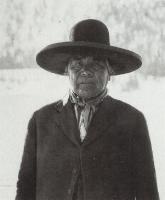
Wovoka:
Wovoka performed what became known as the Ghost Dance. This involved the men holding hands in a circle and shuffling slowly to the left while singing special songs about how Native American life would be restored to its former order and balance. Wovoka claimed that performing this dance would result in the return of the buffalo. News about Wovoka's teachings spread to other Native American tribes. The most enthusiastic supporters of this new cult were the Sioux. This alarmed white settlers in the area who thought it was a preparation for further hostilities. They called for help and by 1890 nearly 3,000 members of the 7th Cavalry arrived to protect the settlers. Some members of the Sioux tribe resented the arrival of the soldiers and decided to leave their Indian Reservation. One group of 350 was led by Chief Big Foot. Forsyth was ordered to escort Big Foot and his men back to the reservation.
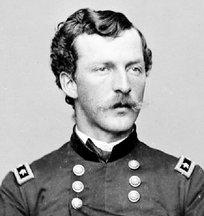
General Nelson Miles:
General Nelson Miles was commander of field operations at this time. He was appalled by what had happened and described it as an "unjustifiable massacre" and instigated a court of inquiry into the affair. Miles relieved Forsyth of his command. The Secretary of War disagreed with this decision and exonerated Forsyth and restored him to his command.
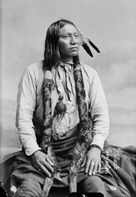
Black Coyote:
Black Coyote did not give up gun to the US troops lead by Colonel James Forsyth.

Yellow Bird:
Yellow Bird was the medicine man of the tribe. He strongly supported the Ghost Dance.
